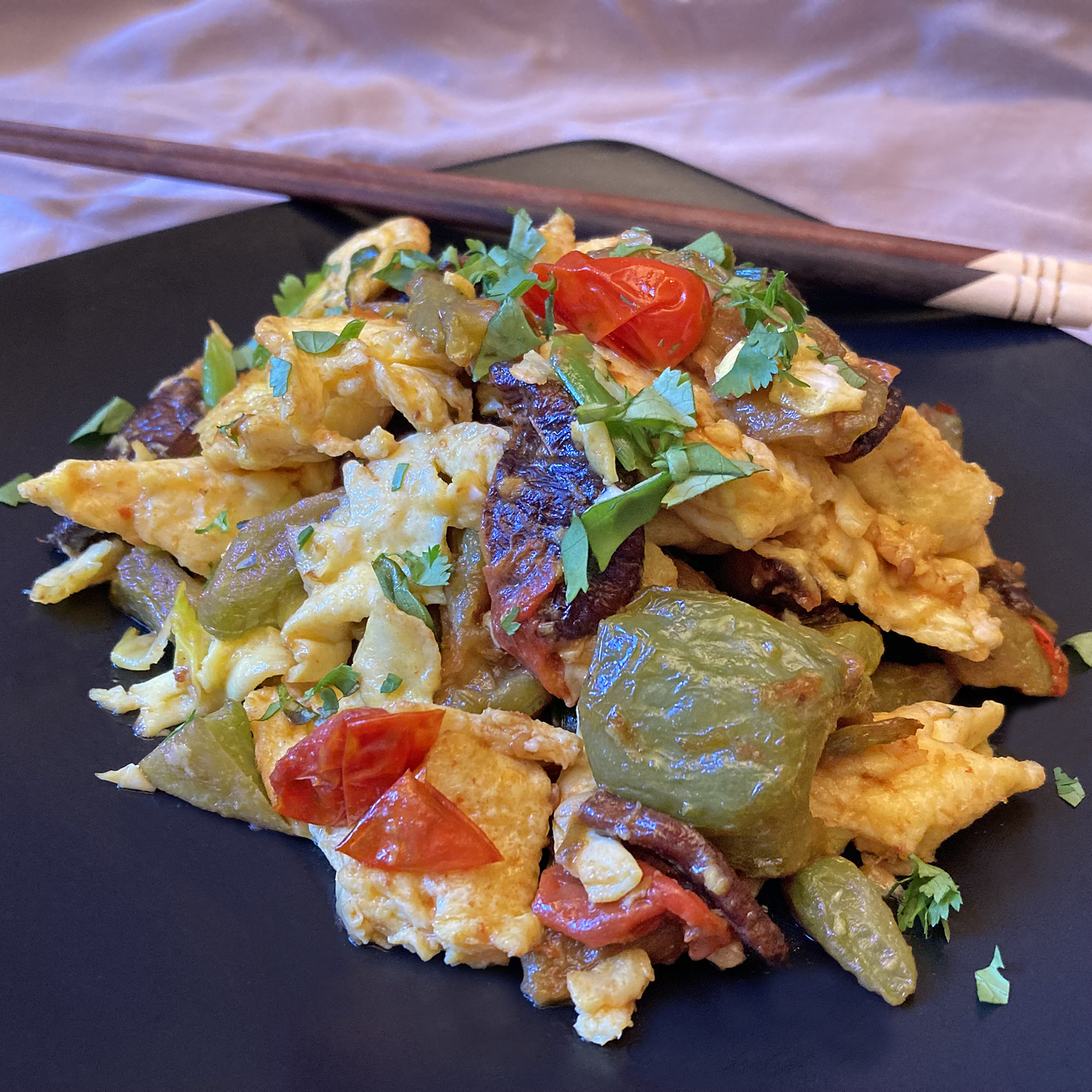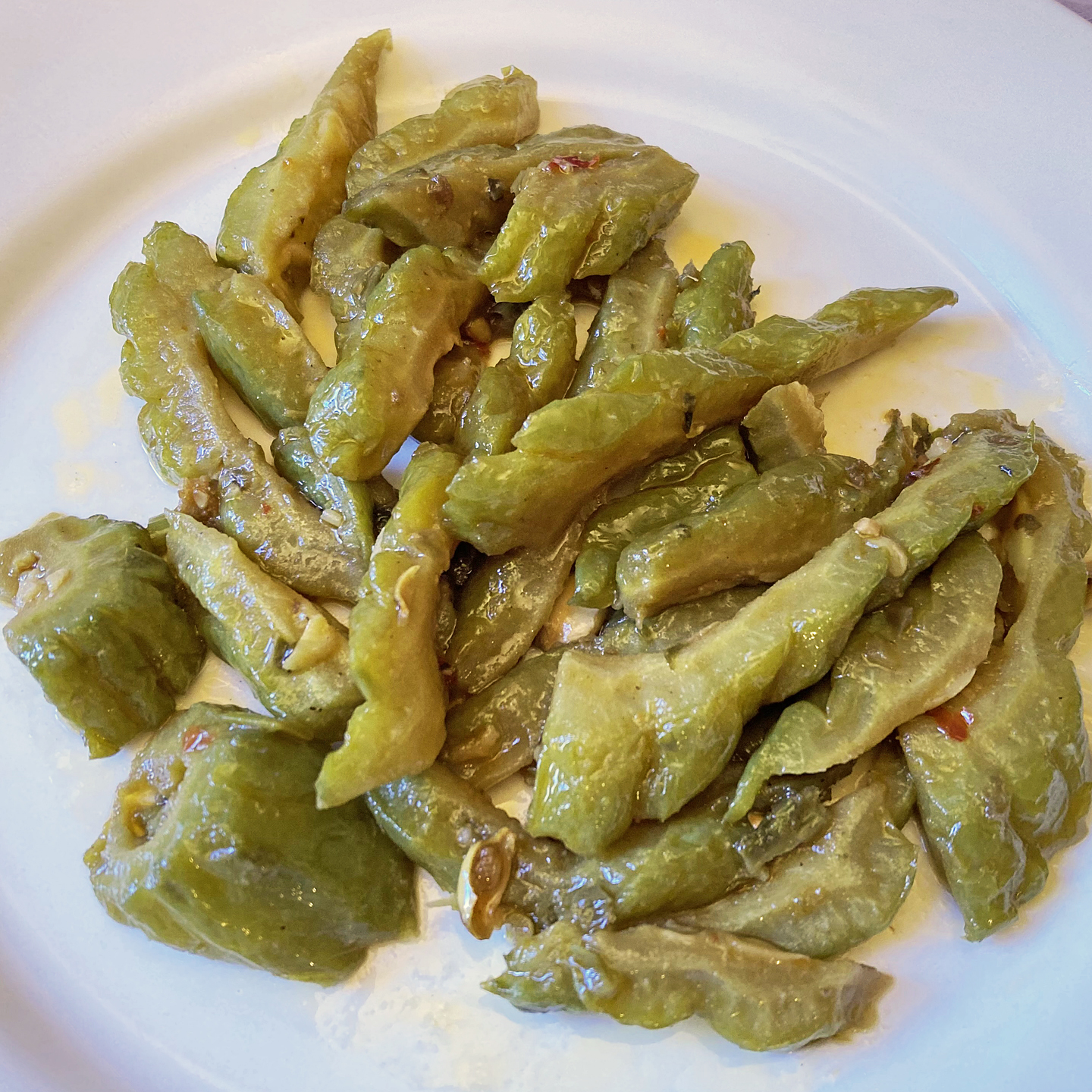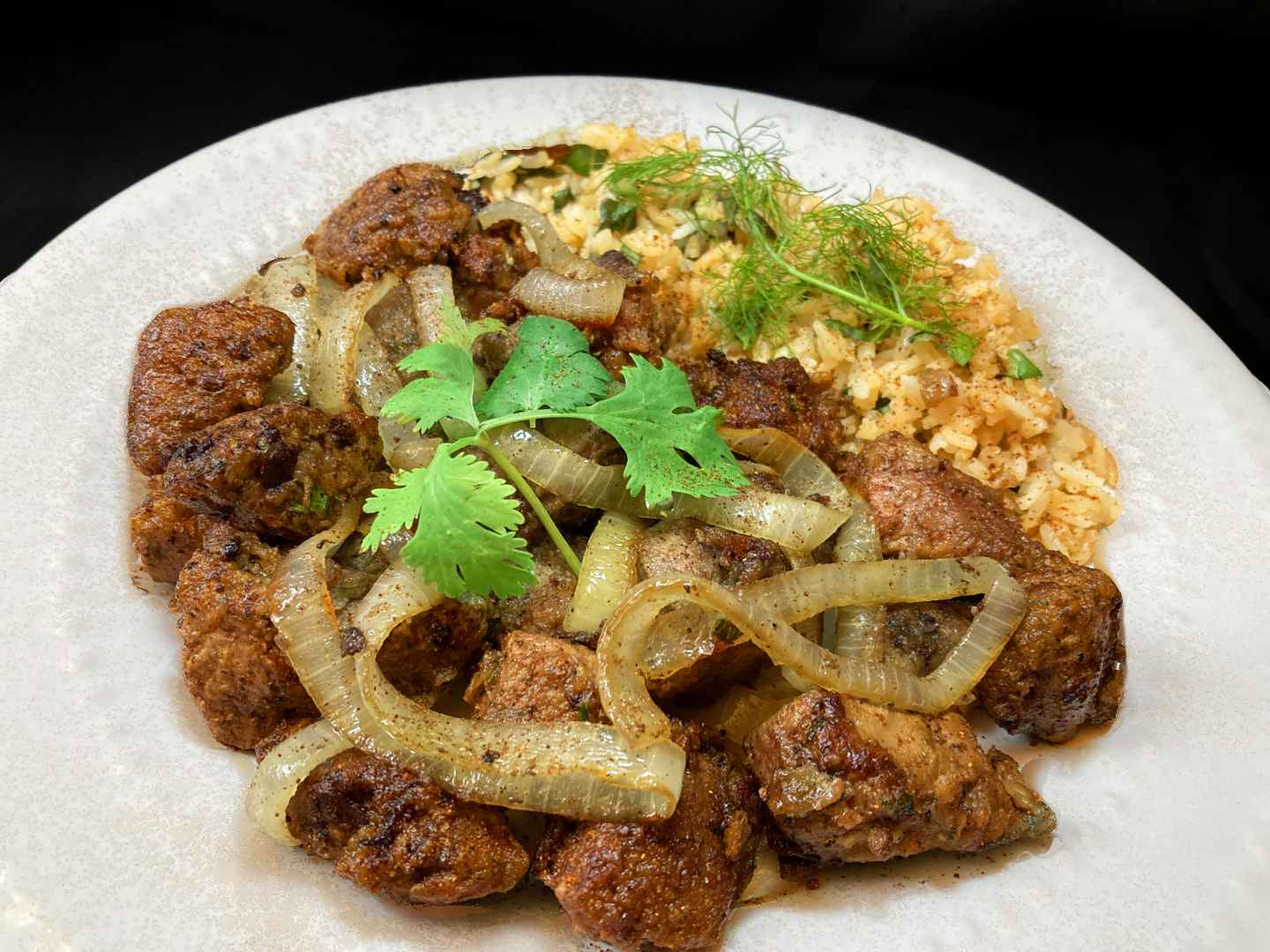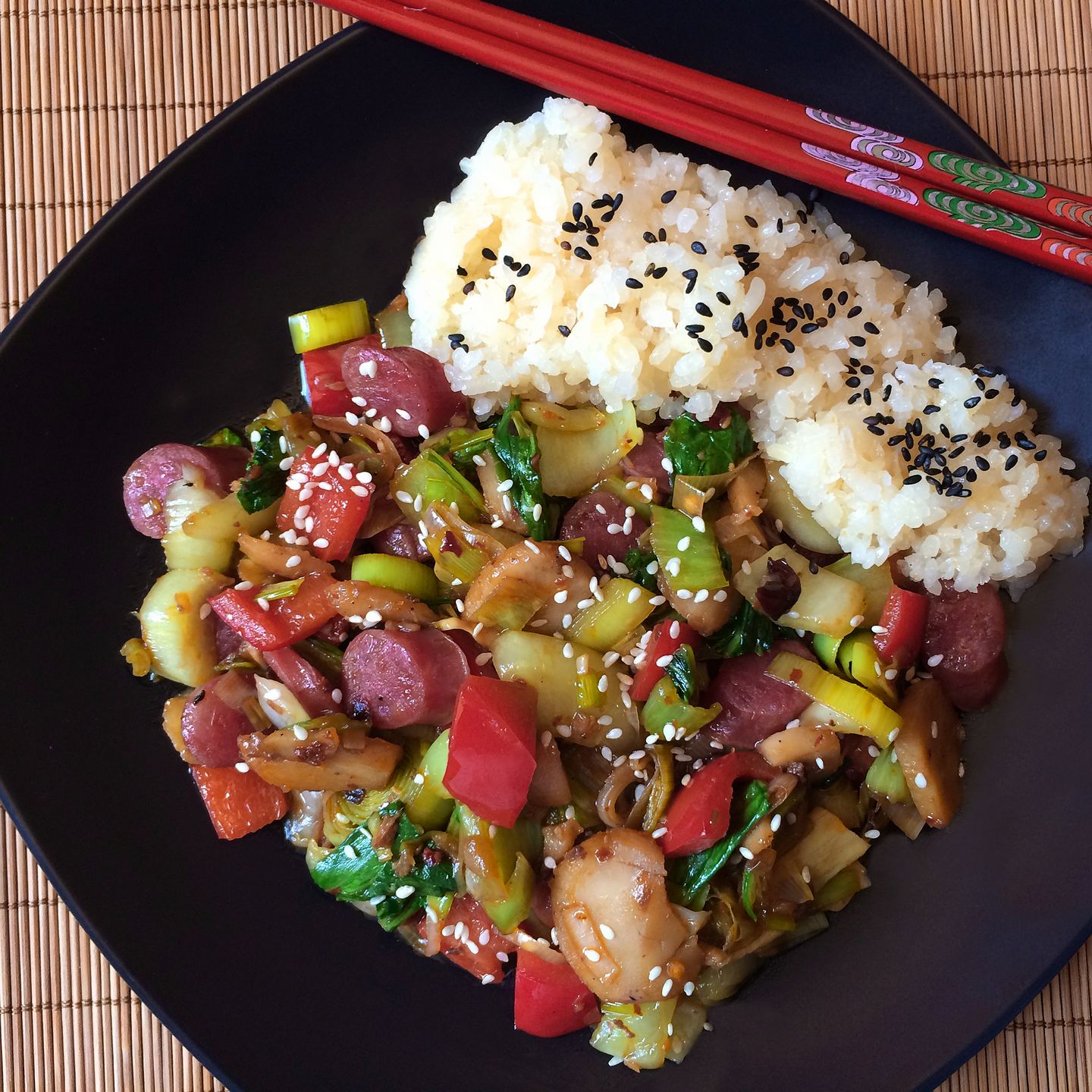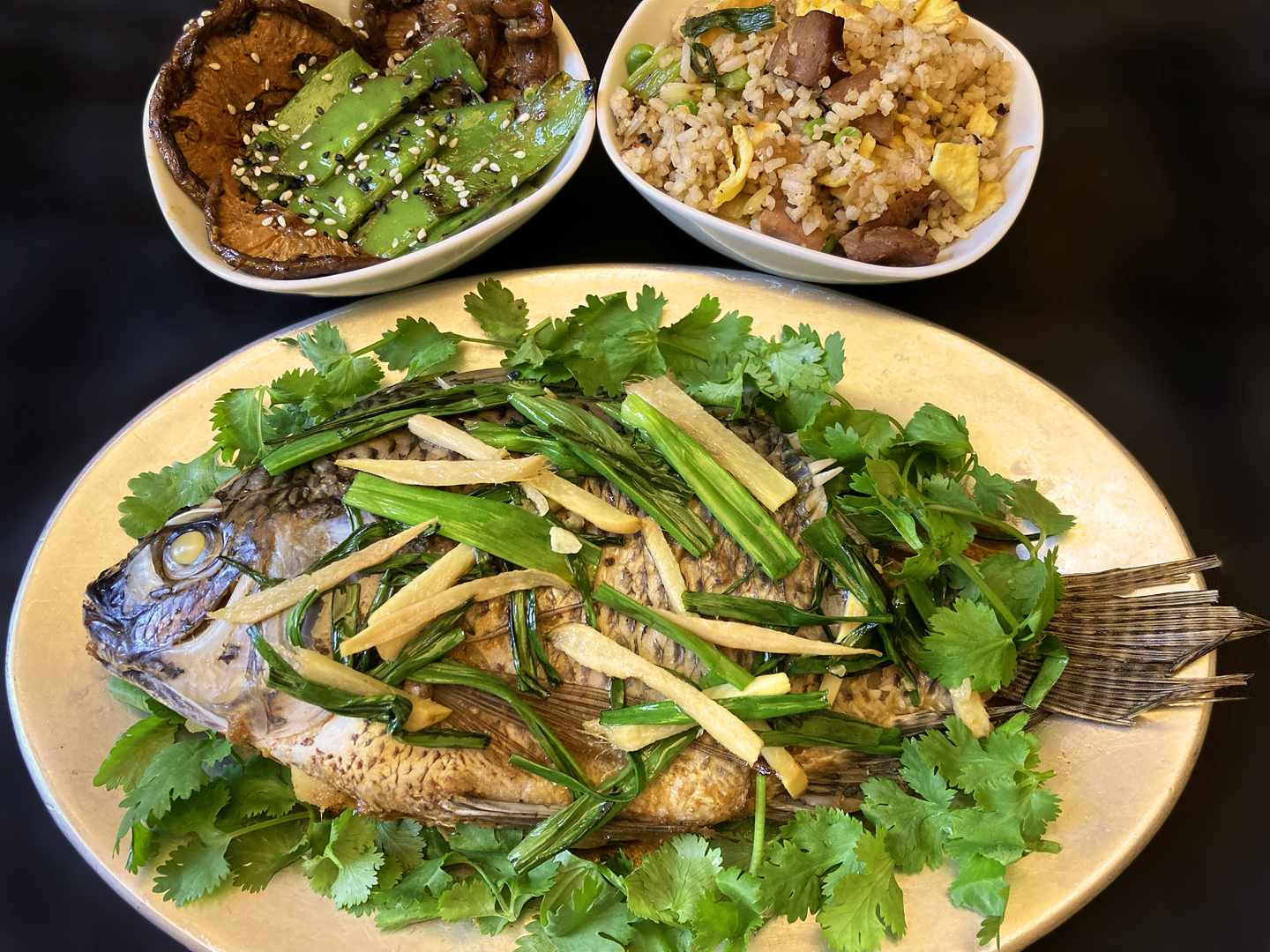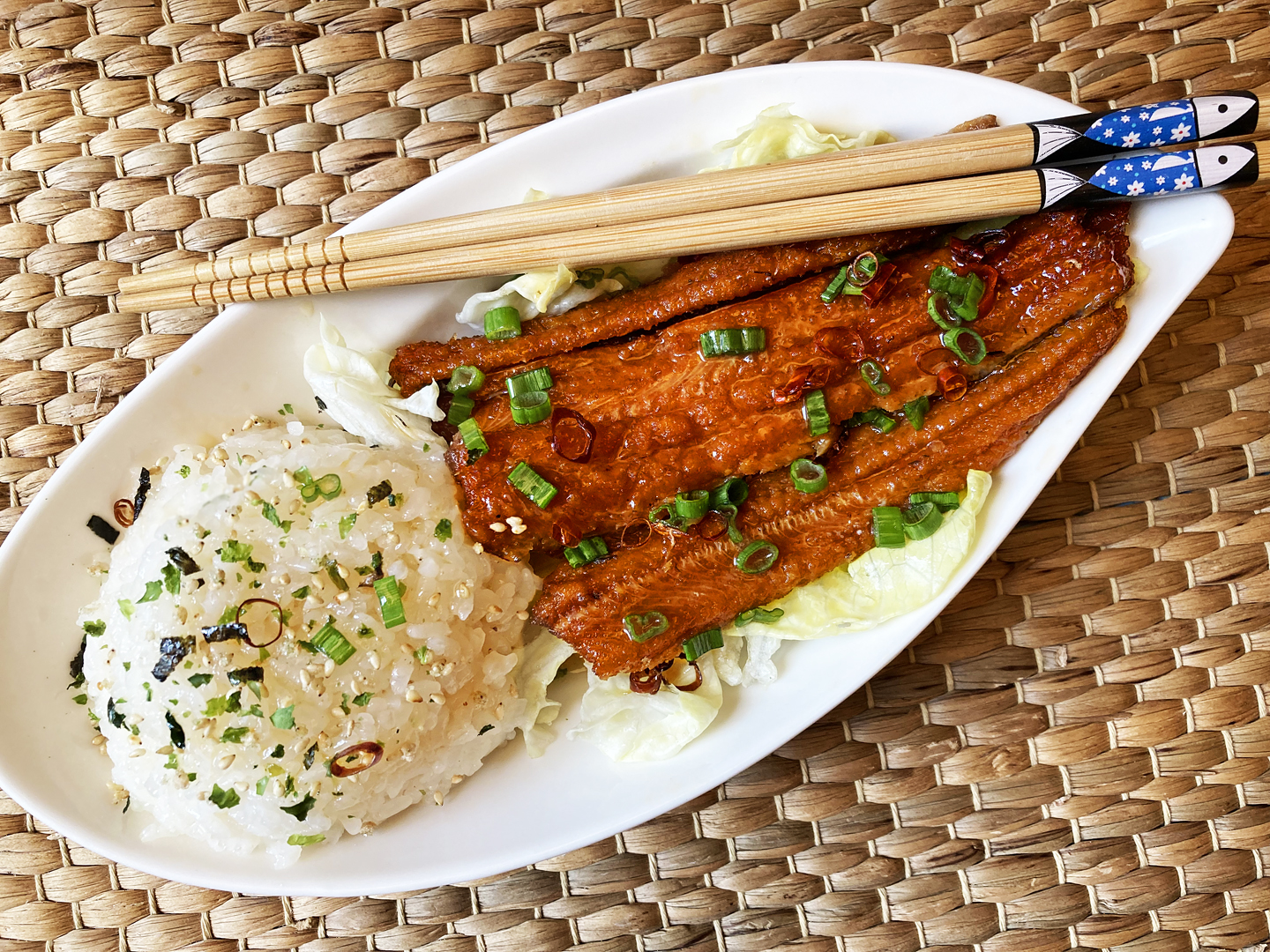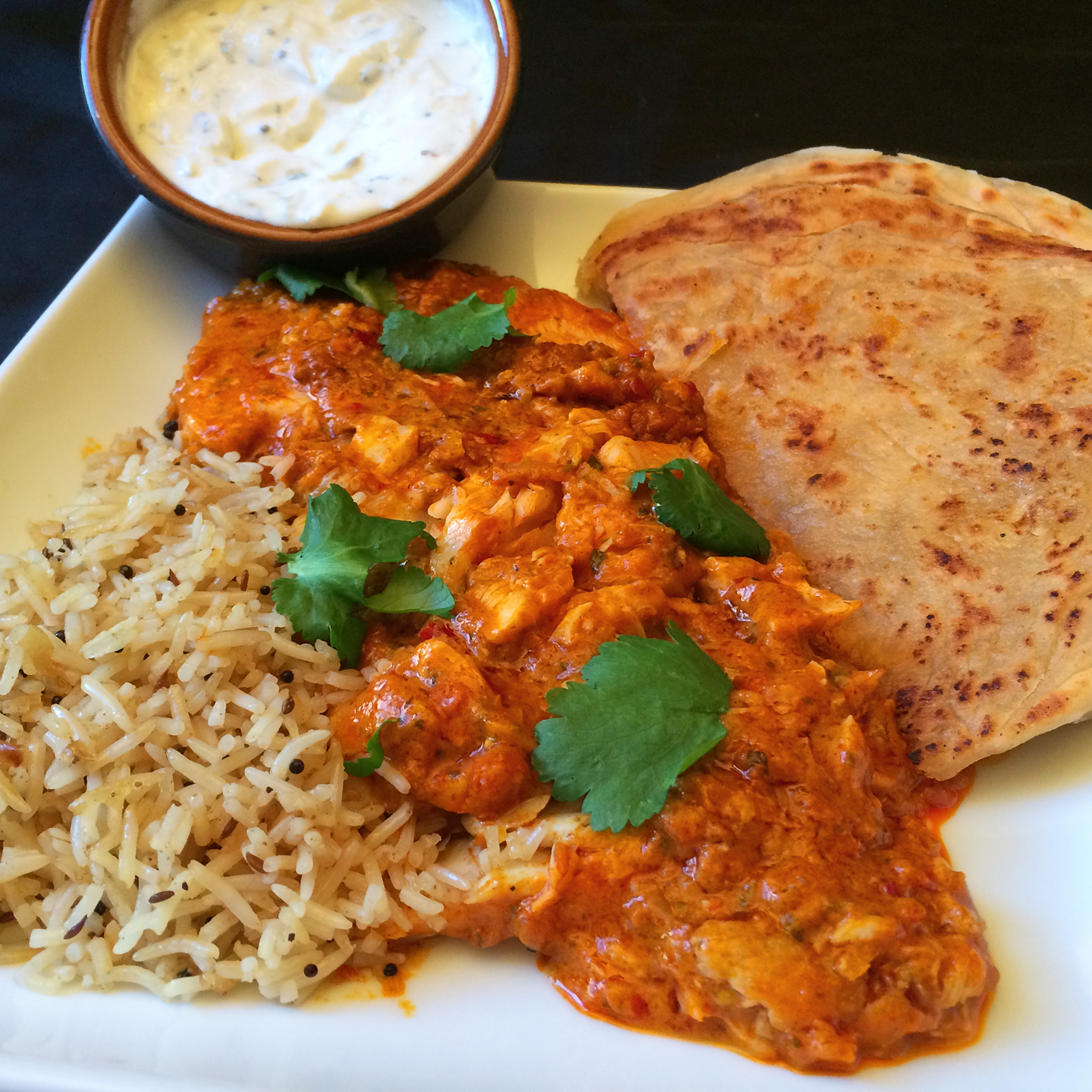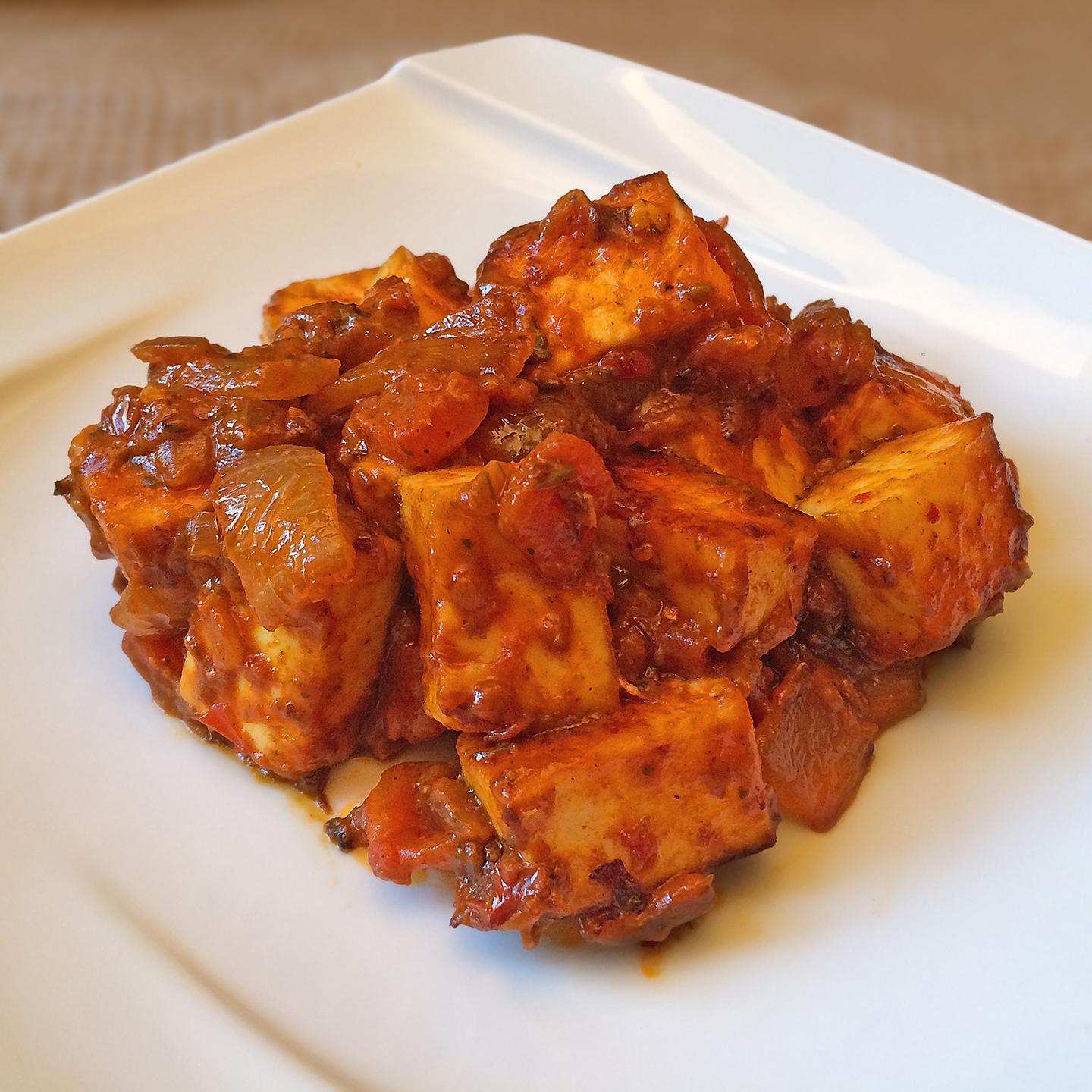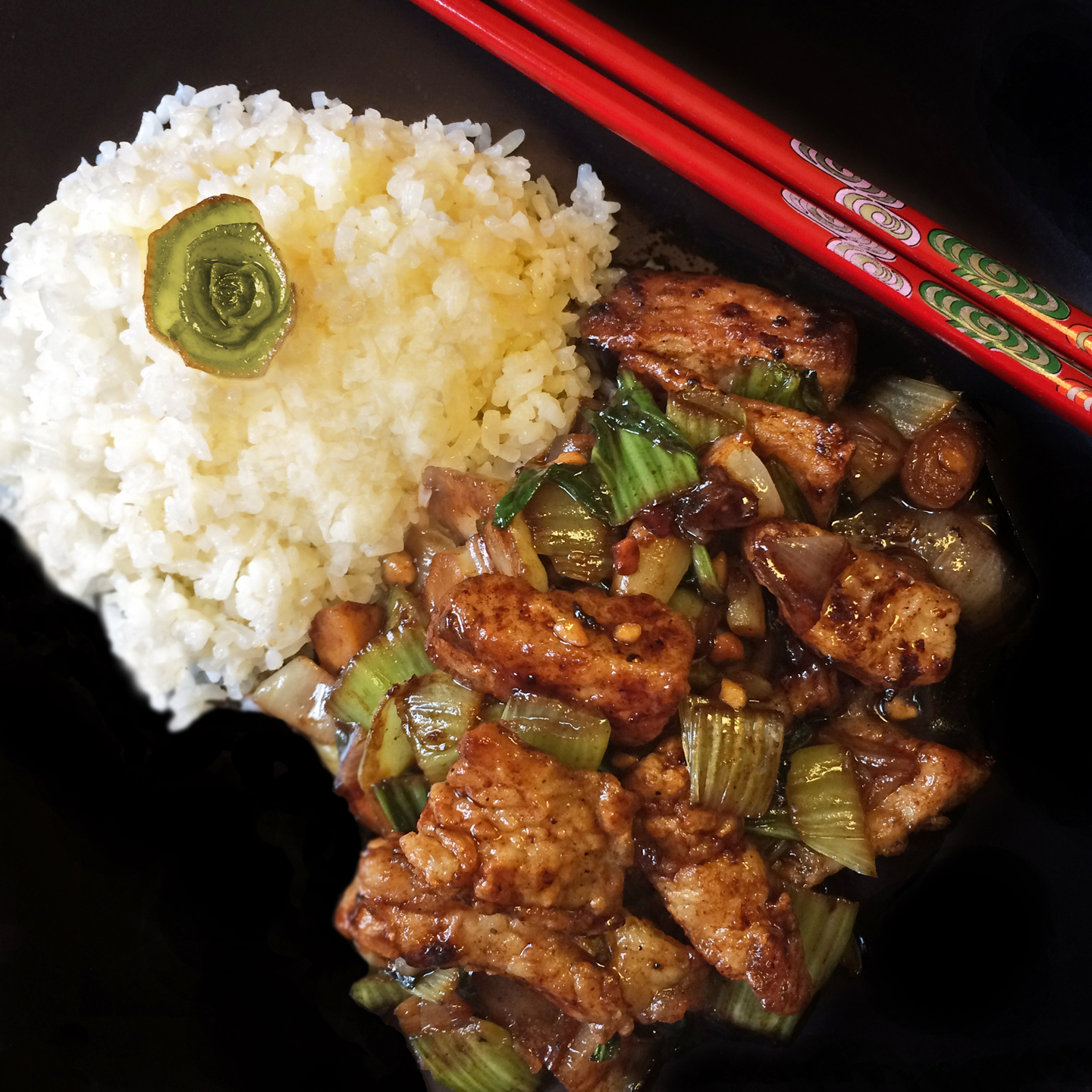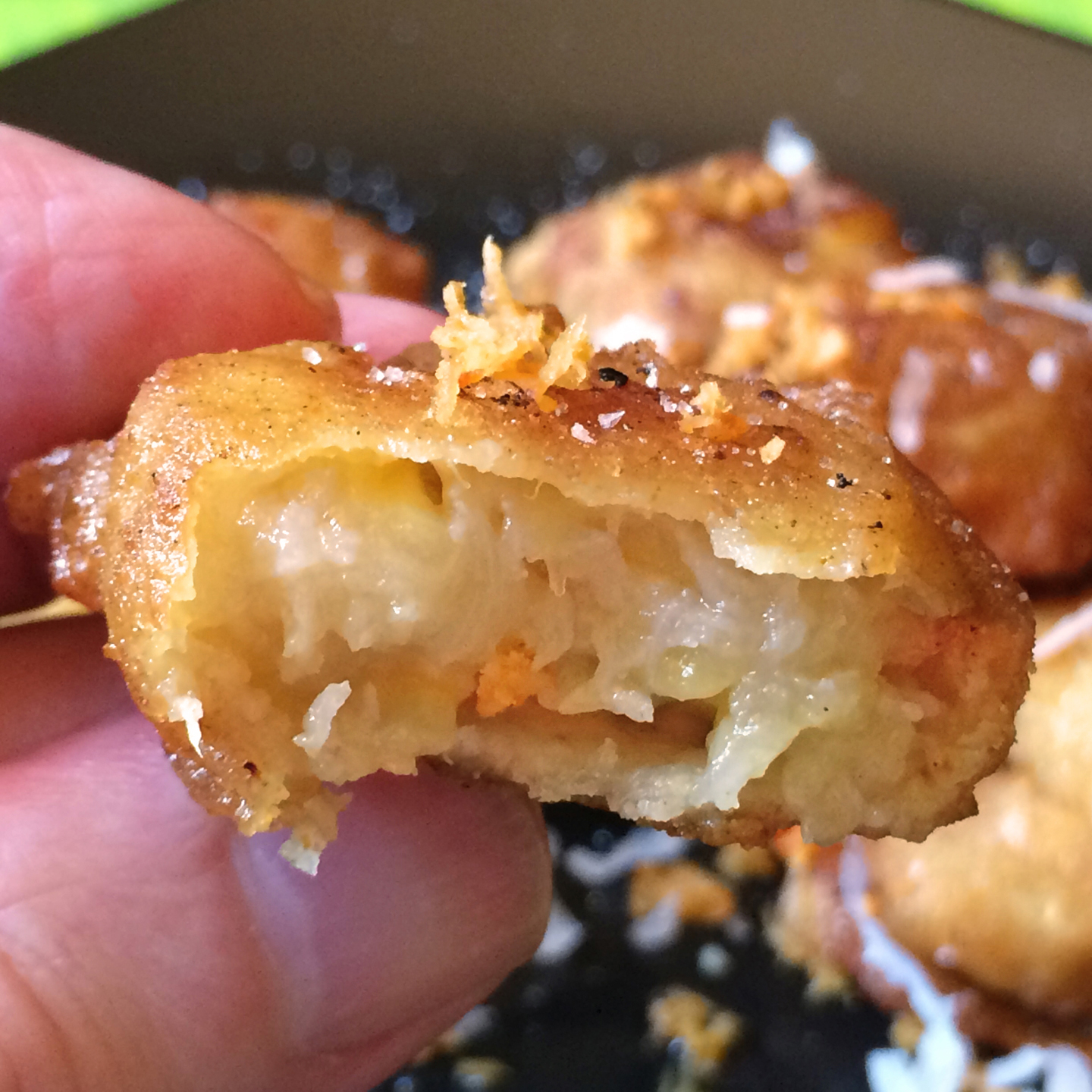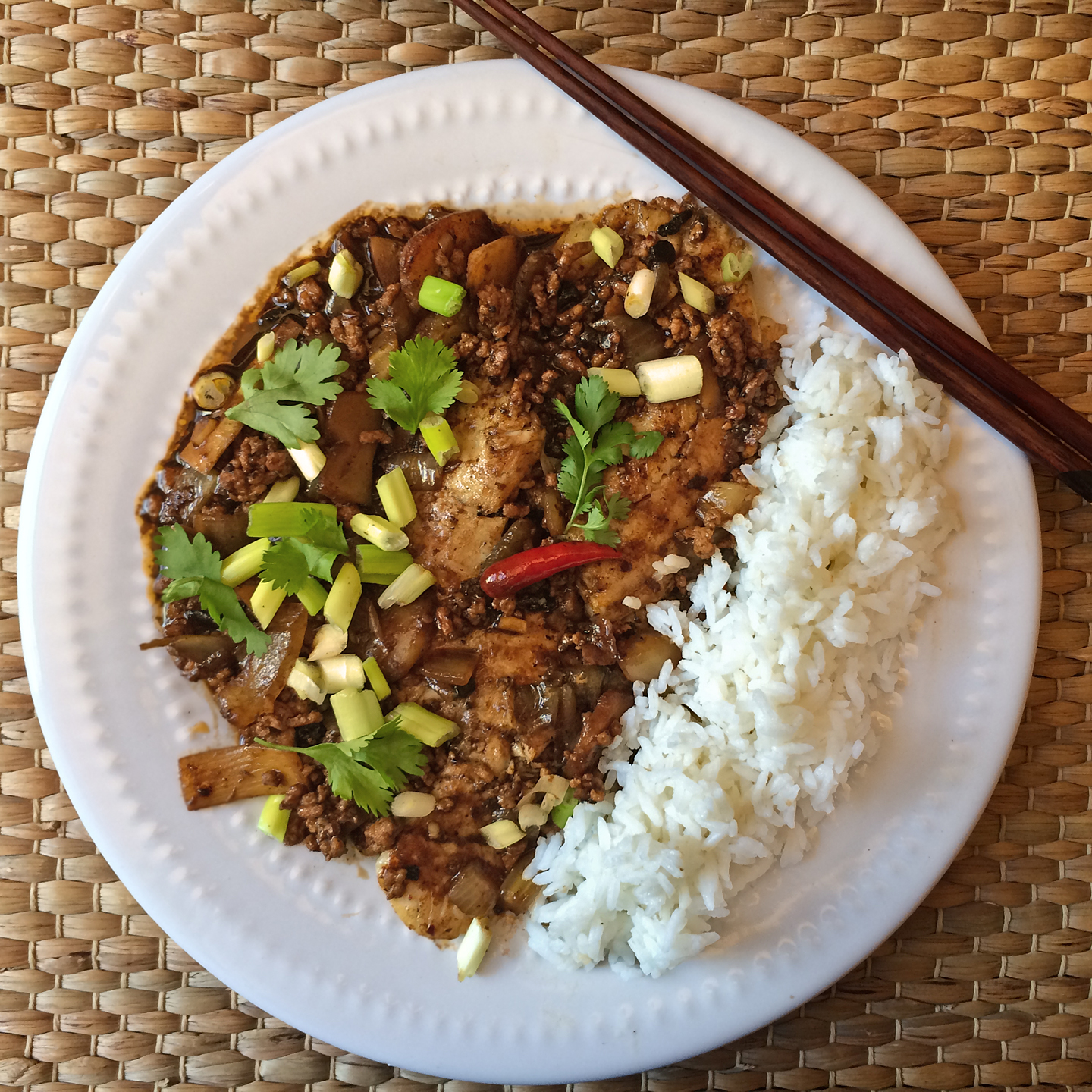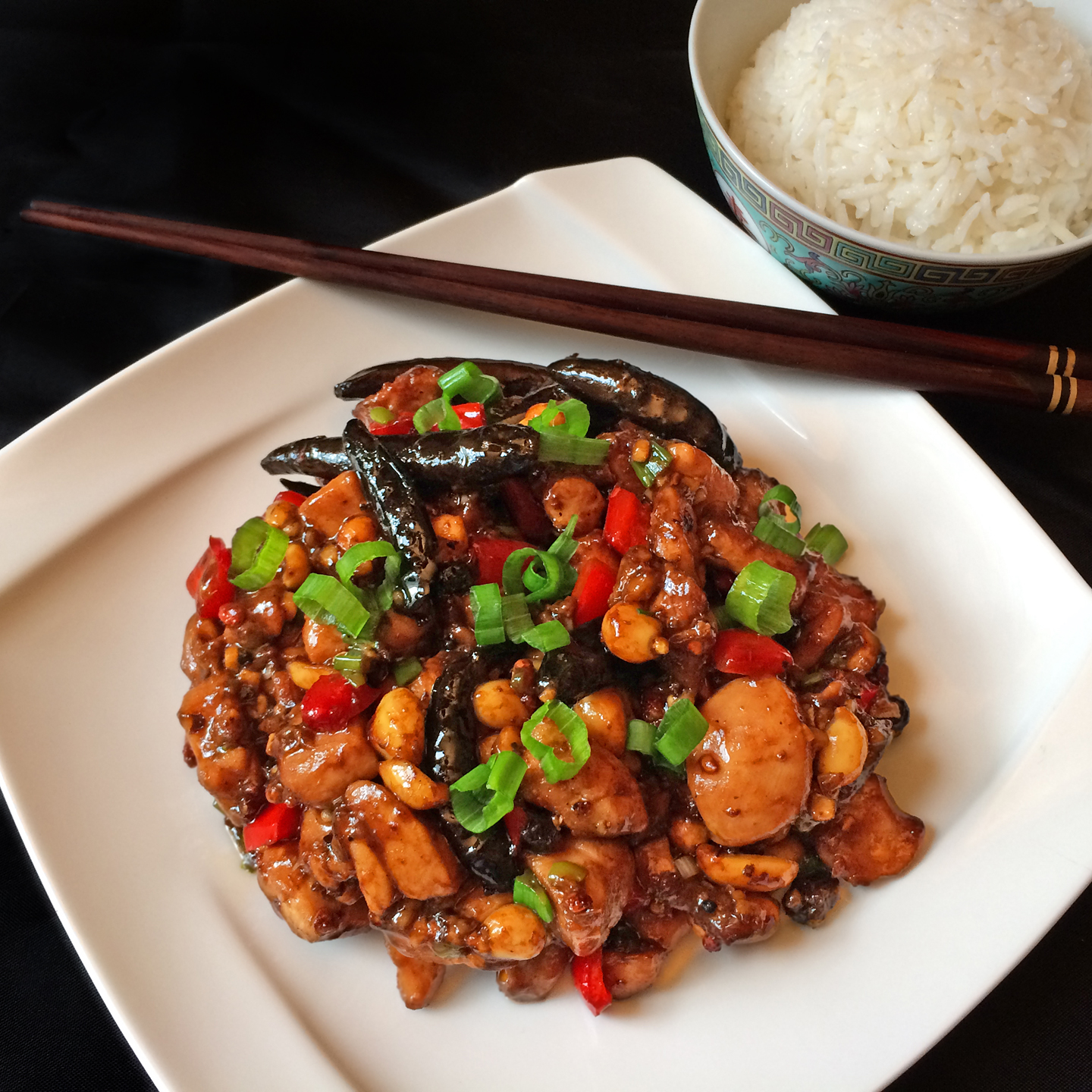(Click on any image to view it in high resolution.)
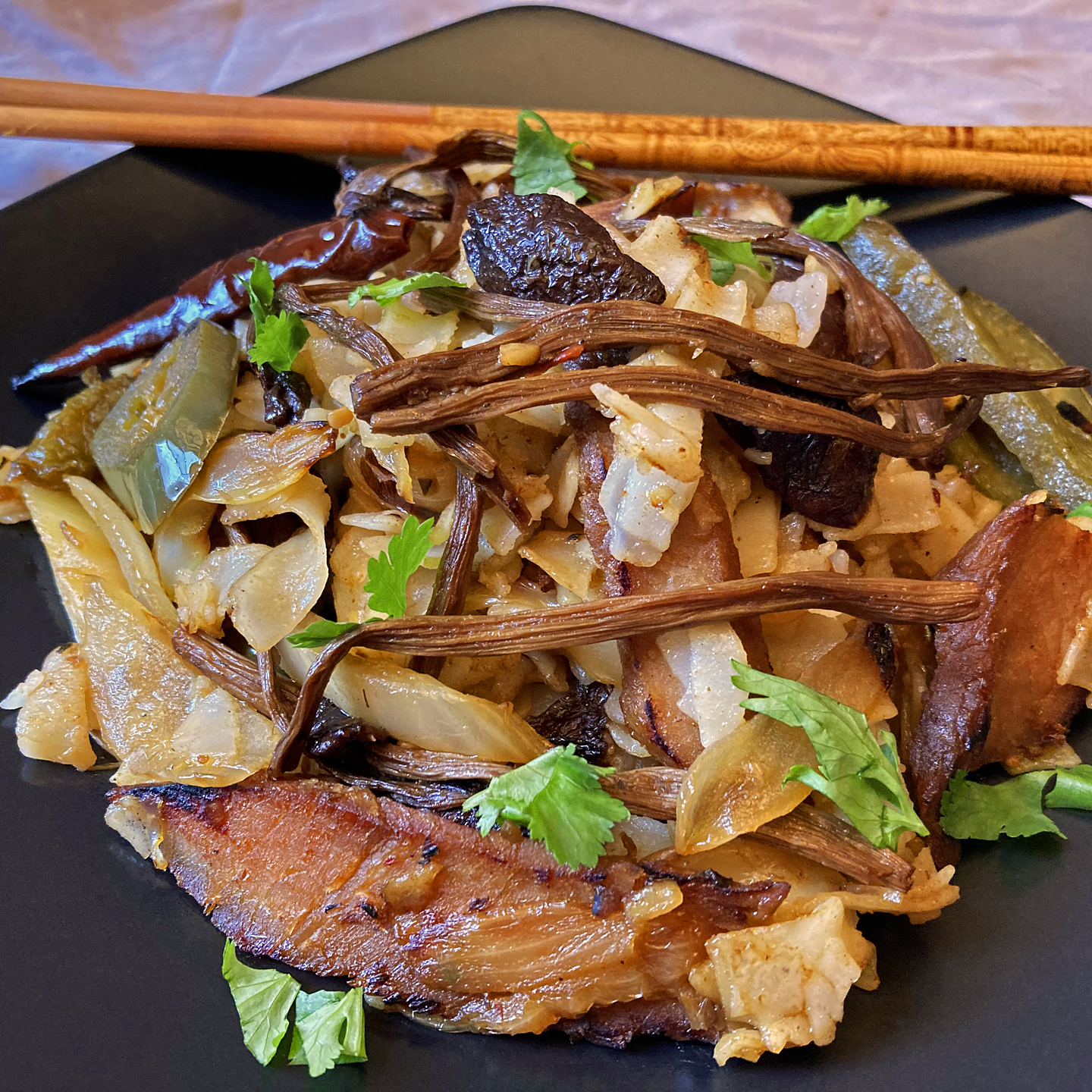
Picking up from two posts ago when I wrote about some leftover Chinese restaurant takeout goodies my friend and neighbor had dropped off: The parcel also included something the menu listed as “Dry Braised Agrocybe Cha Shu Gu”; the truncated Latin Agrocybe Aegerita and transliterated Chinese 茶树菇 apparently refer to what’s known in English as tea tree mushrooms, aka willow mushrooms. The cap is small (about ¼ to ¾ inch) and the thin, striated, tough, crunchy stem is about 6 inches long. The flavor is purported to be woody or earthy, but the dish was so spicy that the true character of the mushroom didn’t penetrate the heat.
Like last time, I decided to stretch the leftovers into something lunchworthy, but the burn from the dried red chili peppers, hot green peppers, chili oil and the like was considerable. What to do? I remembered the famous quote, “Noodles hath charms to soothe a savage breast,” or something like that, so rice noodz from the pantry were pressed into service to temper the fire. I added homemade char siu (the last of the freezer supply), sliced onions and celery, the customary seasonings, and came up with what you see here.
Mission accomplished.

I isolated a few mushrooms at the outset so you could see the genesis of the dish.
Just curious: have any of you ever tried these?

